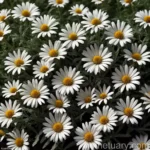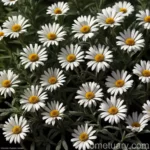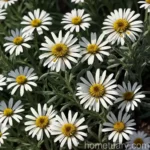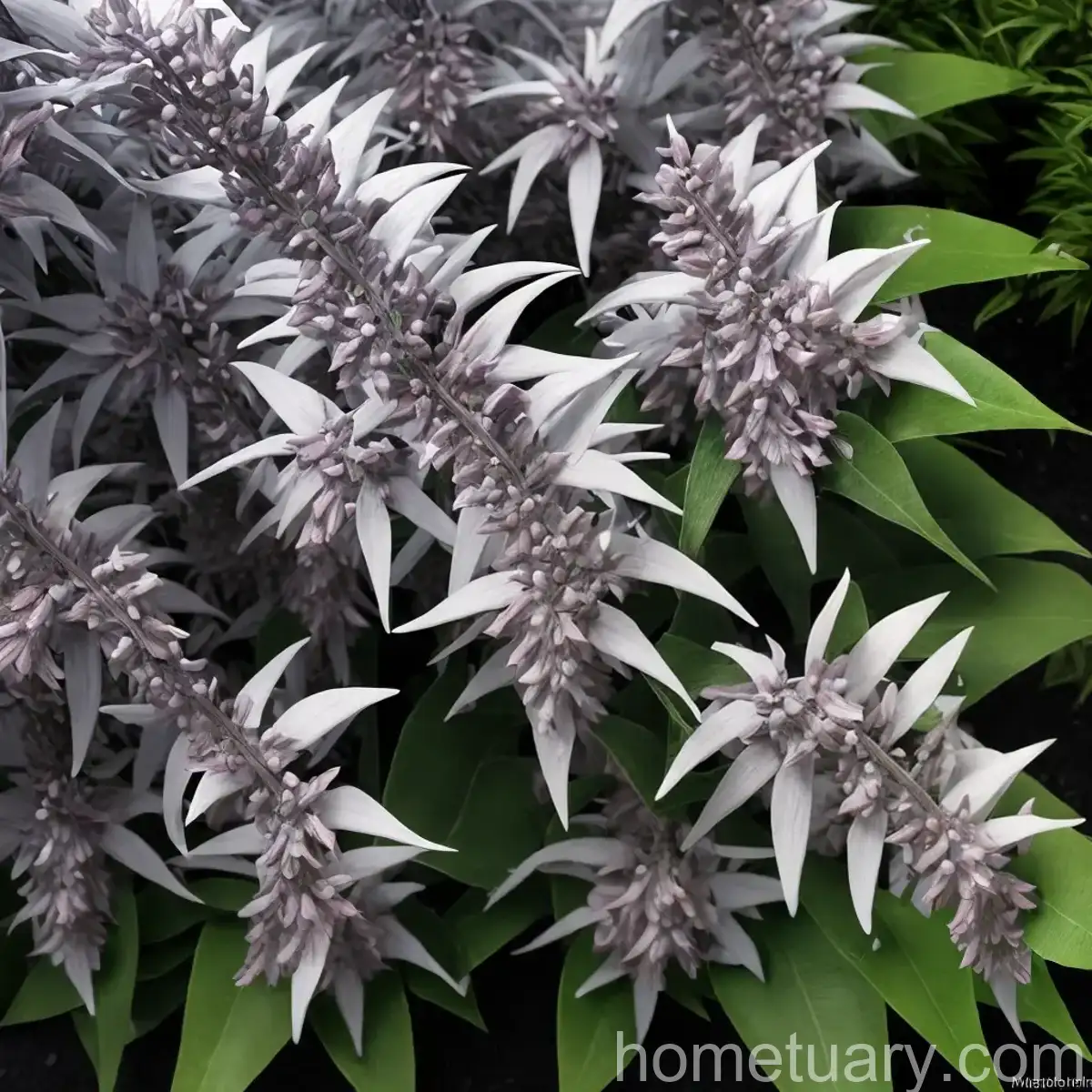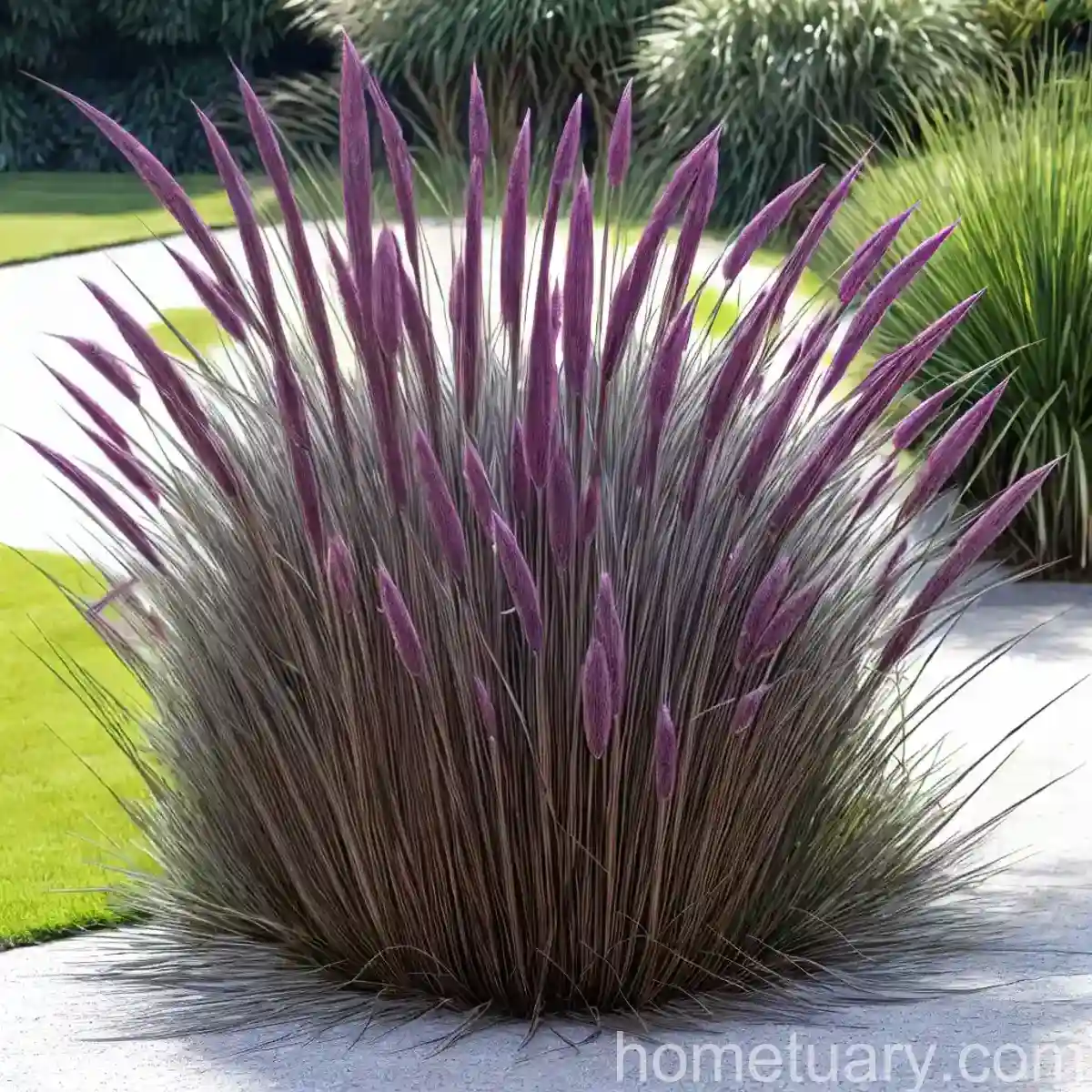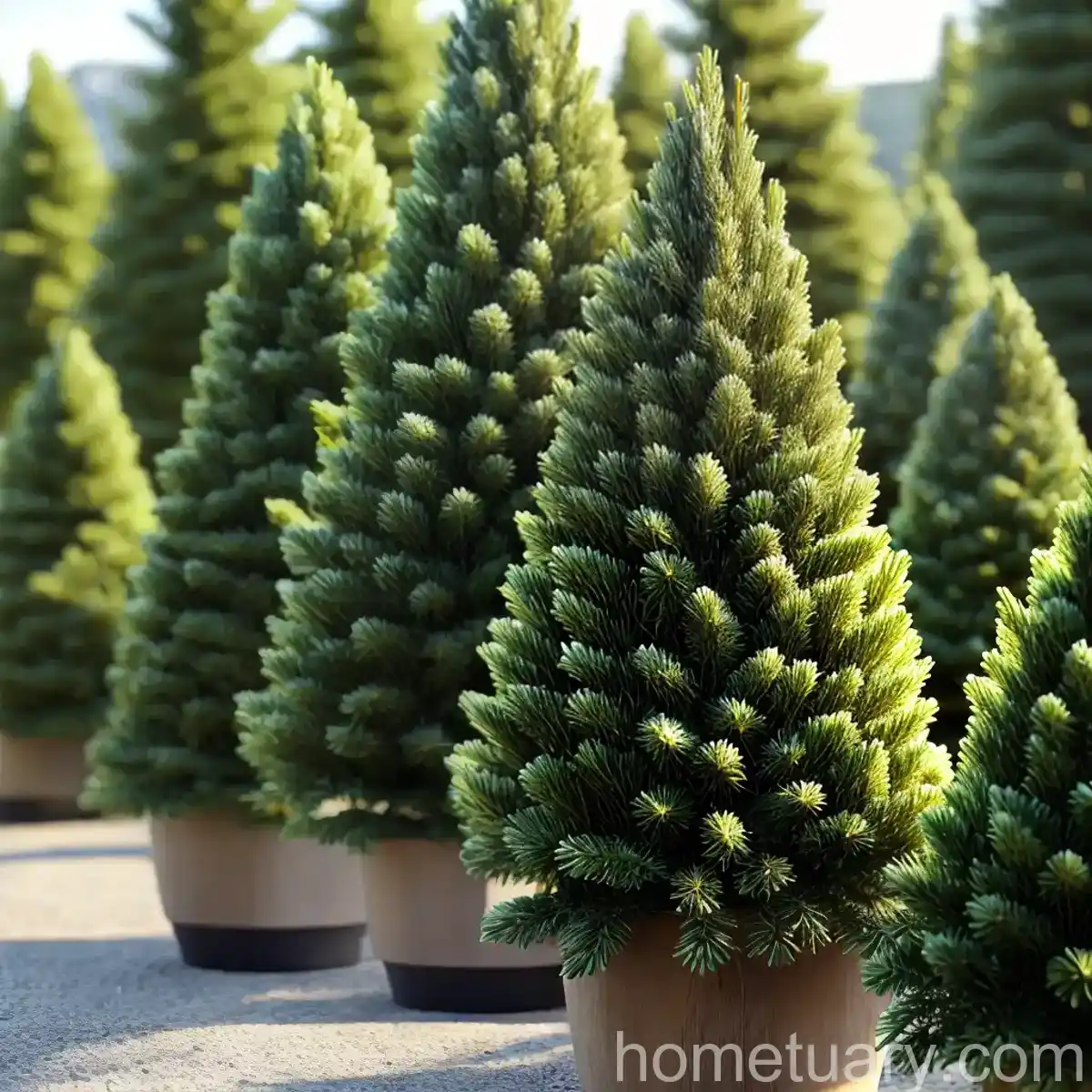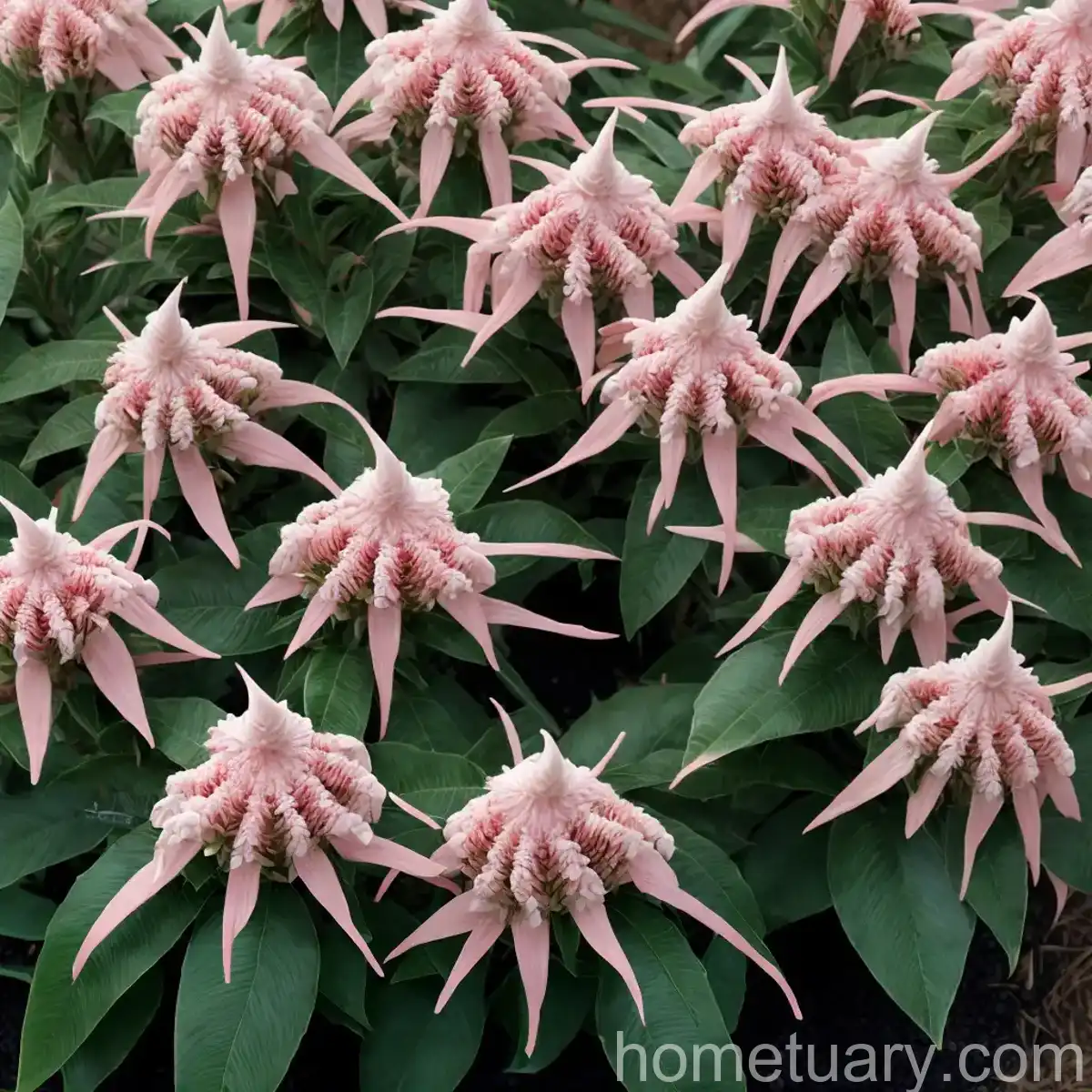Shasta Daisy (Leucanthemum x superbum ‘Switzerland’): A Complete Guide
Shasta daisies, known scientifically as Leucanthemum x superbum ‘Switzerland,’ are iconic perennials cherished for their cheerful flowers and easy-to-maintain nature. In this comprehensive guide, we will delve into every aspect of Shasta daisy care, from its cultural requirements and uses to potential diseases and pests. Whether you are a seasoned gardener or a novice plant enthusiast, this guide will equip you with the knowledge needed to cultivate thriving Shasta daisies in your garden.
What is Shasta Daisy (Leucanthemum x superbum ‘Switzerland’)?
Shasta daisies belong to the Asteraceae family and are a perennial hybrid derived from four daisy species including the oxeye daisy (Leucanthemum vulgare). The variety ‘Switzerland’ is particularly renowned for its large, pure white, and vivid flowers, making it a popular choice in gardens and landscapes.
Key Takeaways – Shasta Daisy (Leucanthemum x superbum ‘Switzerland’)
- Plant Name: Leucanthemum x superbum ‘Switzerland’
- Common Name: Shasta Daisy
- Family: Asteraceae
- Plant Type: Herbaceous perennial
- Hardiness: USDA Hardiness Zones 5-8
- Height: 2 to 3 feet
- Spread: 1.5 to 2 feet
- Bloom Time: Late spring to late summer
- Light: Full sun to partial shade
- Soil: Well-draining, fertile soil
- Water: Regular watering, with good drainage
- Uses: Borders, containers, cut flowers
Now, let’s explore each aspect of Shasta daisy care in detail, covering its culture, uses, water requirements, sunlight preferences, fertilizer needs, soil conditions, pruning, propagation, diseases, pests, and more.
Culture
Uses
Shasta daisies hold both ornamental and practical uses in the garden and beyond. Here are some common uses of this delightful perennial:
- Ornamental Purposes: Shasta daisies are widely used as ornamental plants, adorning flowerbeds, borders, and containers with their radiant blossoms.
- Cut Flowers: The long stems and attractive blooms make Shasta daisies a popular choice for cut flower arrangements and bouquets.
- Attracting Pollinators: The nectar-rich flowers of Shasta daisies attract pollinators like bees and butterflies, contributing to a vibrant and biodiverse garden ecosystem.
Water
Consistent and adequate watering is essential for the health and vitality of Shasta daisies. While these plants display moderate drought resistance once established, they thrive best in moist, well-drained soil. Here are some key points to consider regarding their water needs:
- Regular Watering: During the growing season, ensure the soil remains consistently moist but not waterlogged.
- Deep Watering: When watering, aim for deep penetration to encourage robust root development and overall plant resilience.
- Mulching: Applying a layer of organic mulch around the base of the plants helps retain soil moisture and regulates soil temperature.
Sunlight
Shasta daisies display a preference for abundant sunlight, thriving best when provided with full sun exposure. Here’s what you need to know about meeting their sunlight requirements:
- Full Sun: Aim to plant Shasta daisies in locations that receive at least 6 to 8 hours of direct sunlight daily for optimal growth and abundant blooming.
- Partial Shade: While they prefer full sun, Shasta daisies can tolerate light afternoon shade, especially in regions with intense summer heat.
Fertilizer
Appropriate fertilization aids in promoting vigorous growth and prolific flowering in Shasta daisies. Here’s how you can ensure the nutritional needs of these perennials are met:
- Balanced Fertilizer: Apply a balanced, all-purpose fertilizer in early spring as new growth emerges to support healthy foliage and abundant blooms.
- Avoid Excessive Nitrogen: Refrain from over-fertilizing with high-nitrogen products, as this can promote excessive foliage at the expense of flower production.
Soil
Well-draining, fertile, and nutrient-rich soil forms the foundation for successful Shasta daisy cultivation. Consider the following soil-related aspects to provide an ideal growing environment for these plants:
- Soil Type: Opt for loamy, well-draining soil with a slightly acidic to neutral pH (6.5 to 7.5) for optimal growth and development.
- Organic Matter: Amending the soil with organic matter like compost or well-rotted manure enhances its structure, fertility, and moisture-retention capabilities.
Pruning
Regular pruning and deadheading play a crucial role in maintaining the health and appearance of Shasta daisies and extending their blooming period. Here are some essential pruning tips for these perennial beauties:
- Deadheading: Remove spent blooms promptly to encourage continuous flowering and prevent the plant from expending energy on seed production.
- Early Spring Pruning: Trim back the dead foliage and stems in early spring to stimulate new growth and tidy up the plant’s appearance.
Propagation
Shasta daisies can be propagated through various methods, including division, cuttings, and seed sowing. Here’s how you can propagate these delightful perennials to expand your garden or share them with fellow gardening enthusiasts:
- Division: In early spring or fall, divide established clumps, ensuring each division has healthy roots and shoots for successful establishment.
- Cuttings: Take stem cuttings in early summer and root them in a suitable growing medium to produce new plants.
- Seed Sowing: Collect mature seeds in late summer and sow them in prepared soil, providing the necessary warmth and moisture for germination.
Container Popularity
Shasta daisies are well-suited to container cultivation, offering an opportunity to bring their charm to patios, balconies, and smaller outdoor spaces. Whether planted individually or combined with other compatible companions, these perennials can thrive and enchant in containers. Here are some key points to consider when growing Shasta daisies in containers:
- Container Selection: Choose spacious, well-draining containers that allow ample root development and moisture retention.
- Soil and Watering: Utilize high-quality potting mix and ensure consistent watering to maintain optimal soil moisture levels.
- Sunlight: Place the containers in locations that receive abundant sunlight, as Shasta daisies thrive in full sun conditions.
Common Diseases
While generally resilient, Shasta daisies are susceptible to certain diseases that can impact their health and vigor. Being aware of common diseases and their symptoms is crucial for prompt intervention and effective management. Here are some prevalent diseases that may affect Shasta daisies:
- Powdery Mildew: This fungal disease manifests as a powdery, white coating on the leaves, leading to diminished plant vigor and unsightly foliage.
- Leaf Spot: Leaf spot diseases cause dark, water-soaked lesions on the foliage, potentially resulting in premature leaf drop and reduced plant vitality.
- Root Rot: Excessive soil moisture and poor drainage can contribute to the development of root rot, affecting the overall health of the plant.
Disease Diagnosis
Prompt and accurate diagnosis of plant diseases is essential for implementing targeted control measures and preventing the spread of pathogens. When assessing potential diseases affecting Shasta daisies, consider the following diagnostic steps:
- Visual Symptoms: Carefully examine the foliage, stems, and overall appearance of the plant to identify any abnormalities, discolorations, or lesions.
- Environmental Factors: Assess the growing conditions, including watering practices, sunlight exposure, and air circulation, to ascertain if environmental stressors contribute to disease development.
- Consultation: If uncertain about the diagnosis or treatment options, seek guidance from local extension services or experienced horticulturists for expert advice.
Common Pests
A variety of pests may pose a threat to the health and beauty of Shasta daisies, requiring vigilant monitoring and integrated pest management strategies. Here are some common pests that may target these beloved perennials:
- Aphids: These small, sap-sucking insects can cluster on the tender growth tips and undersides of leaves, potentially causing stunted growth and distorted foliage.
- Leafhoppers: Leafhoppers may feed on the plant sap, leading to stippled or discolored leaves and reduced plant vigor.
- Slugs and Snails: These mollusks can feed on the foliage and flowers of Shasta daisies, leaving behind irregular holes and damage.
Botanist’s Tips
As a plant scientist and enthusiast, I would like to share some valuable tips and insights for successfully growing and nurturing Shasta daisies:
- Companion Planting: Pair Shasta daisies with complementary plants such as lavender, salvia, and coreopsis to create visually captivating and beneficial plant communities.
- Mulching: Apply a layer of organic mulch around the base of Shasta daisies to suppress weeds, conserve soil moisture, and moderate soil temperature.
- Winter Care: In regions with cold winters, protect the plants by applying a layer of mulch and cut back the foliage after the first hard frost to prepare them for winter dormancy.
Fun Facts
Uncover some intriguing and delightful facts about Shasta daisies that add to their allure and appeal in the garden:
- The name “Shasta” daisy was inspired by the snow-capped Mount Shasta in California, reflecting the plant’s pure white blossoms and enduring beauty.
- Shasta daisies are renowned for their ability to attract pollinators, contributing to the vibrancy and biodiversity of garden ecosystems.
Links to External Resources
Ready to embark on your Shasta daisy gardening journey? Explore the following external resources for additional insights, tips, and visual inspiration:
- Royal Horticultural Society – Growing Shasta Daisies
- The Old Farmer’s Almanac – Planting and Caring for Shasta Daisies
- University of Florida IFAS Extension – Shasta Daisy Production Guide
With this comprehensive guide, you are now equipped with the knowledge and insights needed to nurture thriving Shasta daisies in your garden. From understanding their cultural requirements to identifying potential diseases and pests, you can embark on a rewarding and enchanting journey with these captivating perennials.
Happy gardening!




